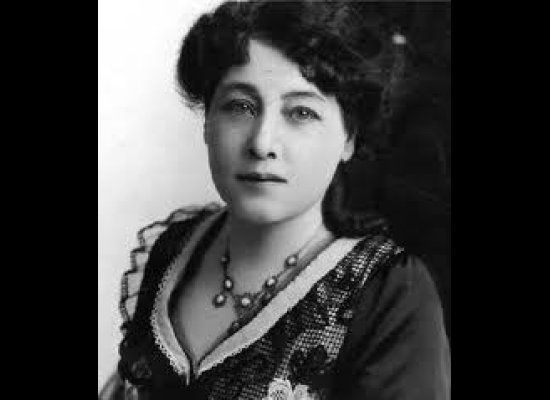Pop quiz: Who was at the beginning of the film industry? D.W. Griffith, Cecil B. De Mille, and Alice Guy Blache immediately spring to mind, right? Yes! Wait, what? Who?
Ah. That "who?" is about to be remedied: On October 13, as the DGA -- Directors Guild of America -- celebrates its 75th anniversary, they will also honor Alice Guy Blaché in a special posthumous tribute.
Flashback:
"Why didn't Kathryn Bigelow mention being a woman director?" The very first audience question was sharply delivered to the Reel Jersey Girls panel in April of this year. Even though Bigelow claimed her Oscar for The Hurt Locker over a year before, obviously the omission still stung.
But the panel that day was there to breathe life into a ghost. Bringing someone back from the dead is no easy feat. Especially when they were so deeply buried.
A long, slow rubbing of the eyes. Then images start to come into focus. Skeletal, flickering black & white at first, but slowly color starts to bleed in, fleshing out the story to reveal a real reel tragedy.
The ghost is Alice Guy-Blaché -- on par with Griffith, De Mille, and the like as a pioneer of the nascent film industry. Except you've never heard of her.
Prior to Alice, perhaps the most notable female in early cinema was Sallie Gardner, a horse photographed in perpetual motion by Eadweard Muybridge.
But Alice Guy-Blaché was in perpetual motion too. Mere months after seeing the Lumière brothers (in 1895) demonstrate their motion-picture camera, while working as a secretary for Gaumont, Alice persuades her boss to let her use the camera to make a film. The first of over 1,000 films by 1907 -- when DW Griffith began directing his first film.
As panelist Joan Simon, curator of the Whitney Museum retrospective of her films, put it, "Alice Guy Blaché was not just the First Woman Film Director, she has a host of 'firsts' to her credit: writer, producer, director, studio owner ... oh, and wife and mother."
Alice went on location to film. She experimented with hand-tint colorization. She even dabbled with sound-sync on 100 of her films, decades before "talkies" became Lina Lamont's nightmare. And she built her own film studio in Fort Lee, New Jersey, after moving from France. Moreover, her movies were enjoyable!
She did all this, says noted film historian and collector Gene Stavis, because it never occurred to her, or anyone else, that she couldn't. Film was too new to have any rules.
Watching Steven Spielberg accept an award in recent years, talking about the string of mentors that resulted in his mentorship, and those he's mentored since, I realized women don't have that -- at least in the arena of business -- although they are struggling hard to establish this dynamic now. (Alice actually mentored men, and a few tried to supplant or sabbotage her career.)
It's futile, but too tempting not to speculate on what it would be like had Alice and her followers proceeded on a parallel track in the film industry.
"The glass ceiling still has very few cracks," panelist and Garden State Film Festival founder Diane Raver wryly noted, in response to the comment "there's a subtle perception that film -- especially film directors -- is a man's world." Subtle? This Guardian article points out the conspicuous dearth of female directors.
The irony is acute: One could posit that since Alice Guy-Blaché was the first to make film a narrative medium -- others were recording men walking in and out of factory doors, but Alice instantly envisioned it as a way to tell stories -- the entire industry as we know it sprang from her.
Which is why it's more than fitting that the DGA is finally welcoming Alice Guy Blaché into their ranks.
This is hard-won victory for Tom Meyers and host of her supporters at the Fort Lee Film Commission and related groups who have been working fervently and tirelessly to shine the well-deserved spotlight on Alice.
But it's a first step. They are also campaigning hard to get her in the New Jersey Hall of Fame(vote!) -- after all, her Solax film studio in Fort Lee employed scores of workers at the turn of the century, and paid them fair wages. She had international distribution for her films, which put New Jersey on the map in far flung places around the globe. And she has a modest grave in Mahwah.
Anthony Slide, probably the man most responsible for uncovering Alice Guy-Blaché, says of these honors, "It's about time!" but he quibbles on the 'First Woman' designation. "Lets honor her as a pioneering filmmaker, period,' he said adamantly when he spoke with me from London."For the industry she helped create ... Let's give her credit for that whether she's a woman or not." Kathryn Bigelow would probably approve.
And if that parallel track had been there all along, the woman in the audience might too.
To discover how Alice got buried and resurrected, see the slideshow.
Gerit Quealy writes on Style & Substance at NBC's StyleGoesStrong.com.
